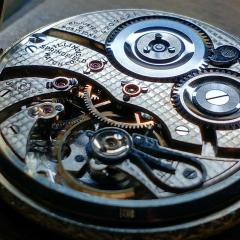First watch service - Are these jewels toast?
-
Recently Browsing
- No registered users viewing this page.
-
Topics
-
Posts
-
Hi, My name is Simeon I am based in Sydney, Australia and have recently got into watch repair / watch making. I am very much a learner having serviced multiple forgotten watches, some of which were actually successful! I have a slowly growing collection of watches, mainly old Soviet, a few Japanese and (not pictured) some Raketas, a Poljot Alarm, an Omega Speedmaster Reduced and a vintage (1972) Tissot Seastar. I like unloved vintage watches, with quirky faces and enjoy bringing them back to life through the simple(!) act of disassembly, clearing and reassembly. I am an Electrical Engineer who also undertook a trade apprenticeship so I am reasonably handy - It's fair to say, I know just enough to get myself in trouble.
-
By DonEilenberger · Posted
Sorry to reopen a necro-thread (long dormant) - I have a Seiko Kinetic 5M42A that needs at least one coil, possibly both. Anyone know of any sources? The usual fallback of eBay has failed me - there are people selling coils, but not the ones for this movement (which was apparently a very popular movement, used in Seiko and Pulsa branded watches.) The coil numbers are: 4002 516, and 4002 519 I'd also love to find a source for spares of the screws used all over this movement - they're Seiko PN 0022 247 Thanks! (Moderator - if this should be a new thread, please do feel free to tell me, or drag this one into a new thread.) Don Eilenberger -
Hi a read what you told me but a still can't understand how to tell what way do you mean when you said the shape example?







Recommended Posts